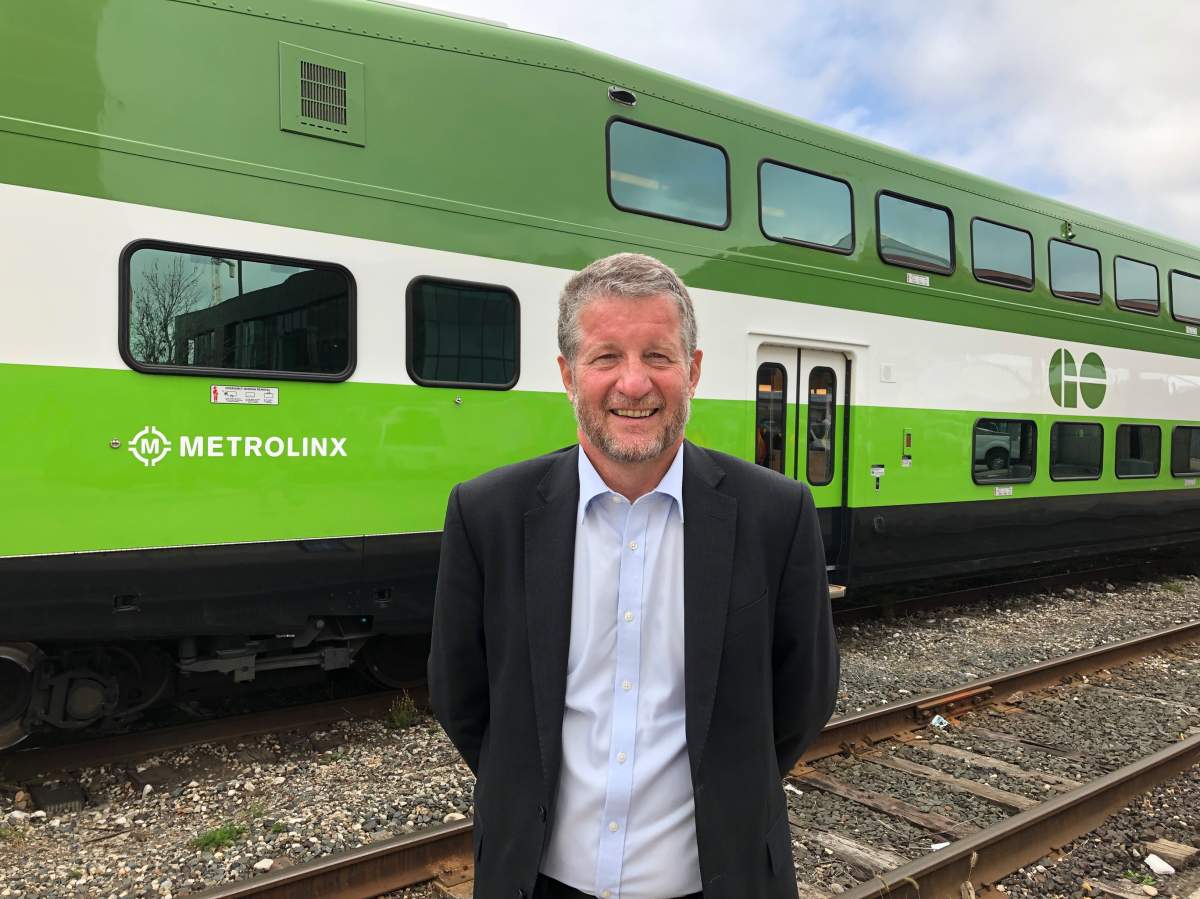Metrolinx is sharing new details about GO Transit’s upcoming train service extension to London, Ont., Stratford and St. Marys, which was first announced last month.

The pilot project launches on Oct. 18 and Transport Minister Caroline Mulroney paid a visit to London’s VIA Rail station on Wednesday to mark its arrival.
“In a matter of days, GO service is coming to London for the very first time,” Mulroney said during a news conference joined by local federal, provincial and municipal politicians.
“We certainly didn’t get here overnight and this has been a team effort from the start.”
Speaking to Global News after the news conference, Metrolinx president and CEO Phil Verster said the pilot project will run for two years at an annual cost of $2.5 million.
Trips between London and Toronto will operate from Monday to Friday with one-way trips priced at about $30, according to Verster.

Get breaking National news
Trains depart from London at around 5:20 a.m. and arrive in Toronto at around 9:15 a.m. The trip back leaves Toronto at around 4:20 p.m. before arriving in London at around 8:20 p.m.
The four-hour trip is nearly double the time it typically takes to drive from London to Toronto, but Verster says focusing on the travel time only gives “half the picture.”
“There’s a big part of this initiative that’s actually about connecting London to the intermediate stations and the intermediate locations,” Verster said.
“We want to explore what the ridership is between Kitchener, London, Guelph, St. Marys, Stratford and the like.”
Verster points to past extensions to Bowmanville, Niagara and Kitchener for why Metrolinx believes the upcoming pilot project is a worthwhile investment.
He says most of these extensions were construction-heavy investments that saw a ramp-up in service follow afterwards.
Another example includes their work in Hamilton’s West Harbour.
“We did a couple of infrastructure investments about two months ago; we extended the service to West Harbour, Hamilton from 40 trains a week to 250 trains a week,” Verster said.
“The thing that’s true about railways is often you provide the capacity and people come to the capacity. You very rarely succeed by creating a lot of expectation and then everyone is here on day one.”
Verster says feedback gathered from riders over the pilot project will help determine the next steps of the extended corridor, including potentially shortening travel times.
“If we’re going to make investments, for example in track or building passing tracks, we’ll make a decision on that within the next two years and it’ll then take another two or three years to build that, so rough timeline.”













Comments